A Little Roundball Sojourn To The East
With its small student body, Centre had to have men who could play multiple sports in order to field teams other than that on the gridiron. During the era of this book, the little school not only played football, but basketball, baseball, had a track team, and in the early twenties, began to put together a tennis and golf team, even though the latter two sports weren't "official."
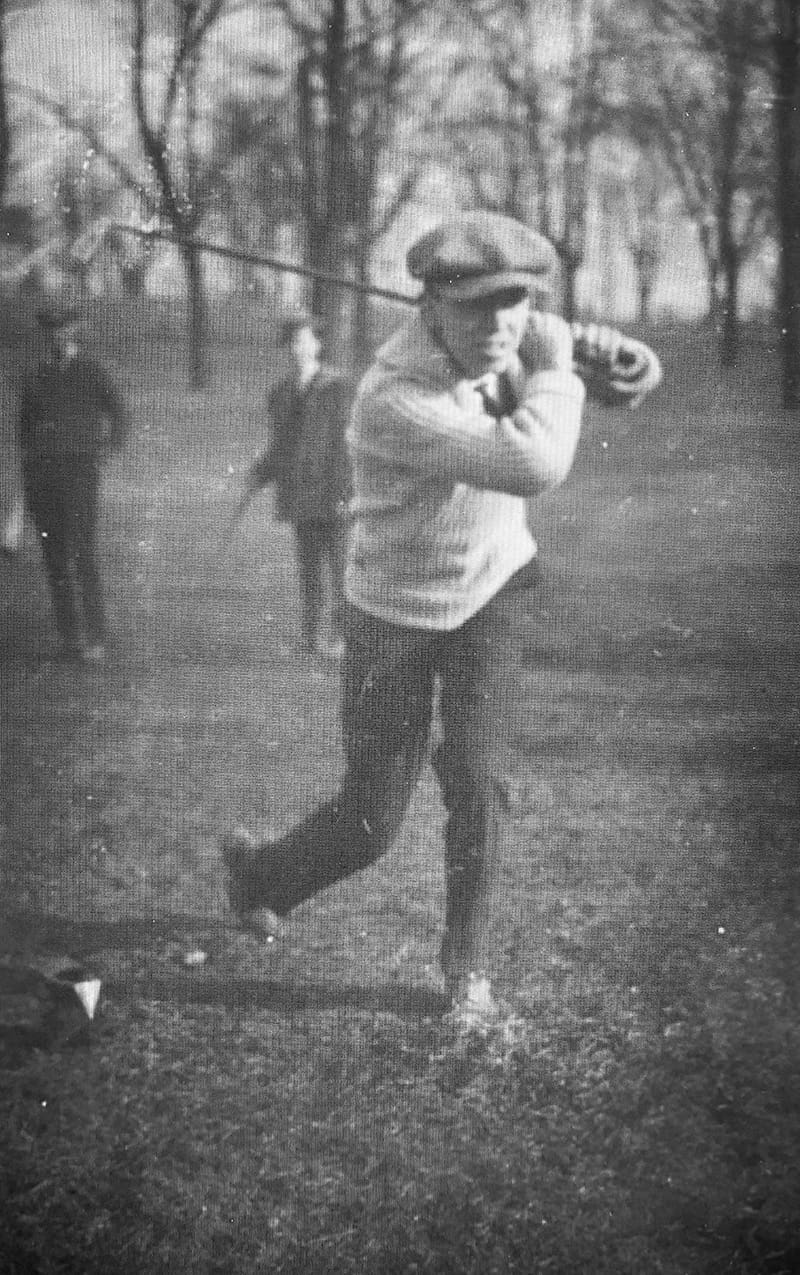
Centre golfer during the era
During the 1920-21 school year, the Colonels had quite a basketball team.
Charles Rice McDowell, a native of Danville, and a 1915 graduate of Centre, took over the basketball coaching job as 1921 began. Before coming back to Danville, McDowell had done graduate work at the University of Chicago and the Columbia School of Journalism, ending up with a master's in history and education. Besides becoming the hoopster's coach, he taught history and political science at the college. McDowell had been quite a player of the sport in his days at Centre, and was young enough to not only coach the team, but able to be a buddy of the players, and to mix it up on the court.
( According to the official Washington and Lee School of Law website, McDowell later "was the most beloved professor ever" at the Lexington, Virginia school. He was on the faculty there from 1927-68.)
Army was the basketball team captain. Besides Army, Bo, Blink Bedford, George Maver, Red Roberts, Royce Flippin and Stanley Robb, all played football. Two non-football players, William Julian "Judy" Walden and Ches McCall, rounded out the squad. While "Judy" may not have played football, he was a star on the track team.
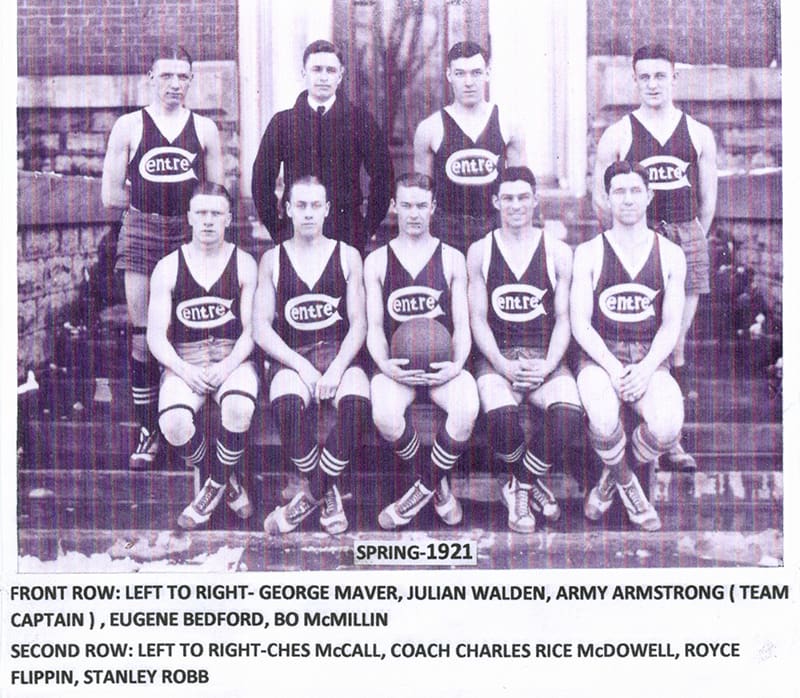
Red Roberts also played on the team but apparently only periodically. He didn't make the trip to the East and wasn't included in the team photo.
Centre opened the season successfully by winning 8 of its first 9 games.
Centre- 46 Kentucky Wesleyan- 14
Centre- 34 University of Louisville- 20
Centre- 42 Auburn- 24
Centre- 29 University of Kentucky- 27
Centre- 62 Georgetown (Ky.)- 23
Centre- 55 Transylvania- 23
Centre- 13 University of Kentucky- 20
Centre- 44 Vanderbilt- 18
Centre- 69 Georgetown (Ky.)- 20
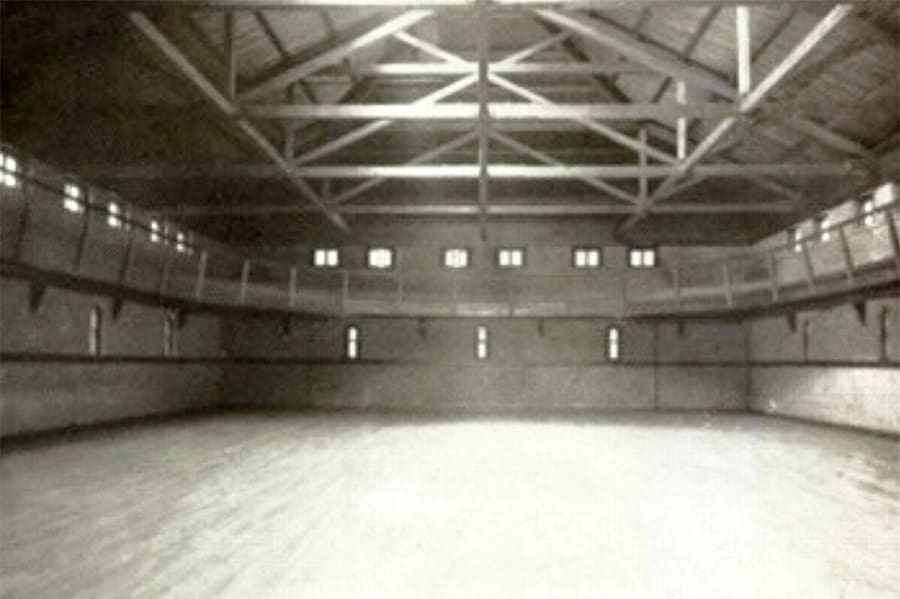
Centre's Boyle-Humphrey Gymnasium which opened in 1915. The fans watched games by lining the playing floor and standing on the track above which circled the gym.
The Colonels' February 8, 1921 defeat of Kentucky at Boyle-Humphrey Gymnasium in Danville, 29-27, was the only loss of the Wildcats during their 13-1 season in which Kentucky won the championship of the Southern Intercollegiate Athletic Association in the tournament in Atlanta.
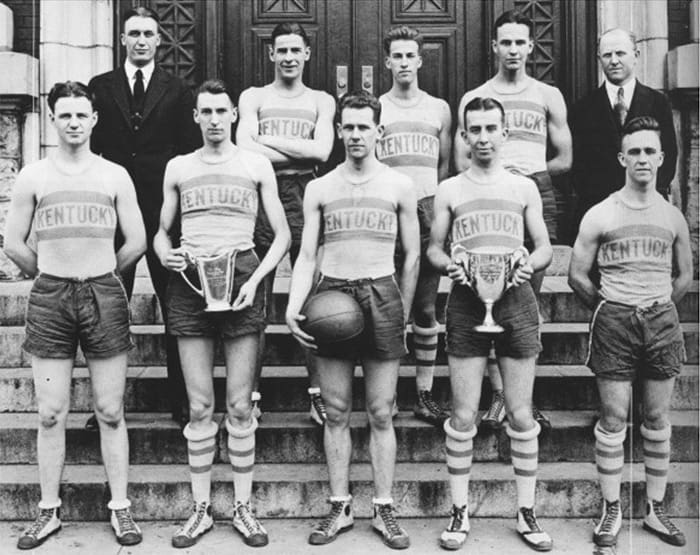
Kentucky, 1921 S.I.A.A. Champions.
Basil Hayden ( 1899-2003 ), 1st row, holding the basketball, was the captain of the team and was Kentucky's first All-American, named after the Wildcats won the conference championship. His jersey hangs in Rupp Arena.

Centre played only 5 men in Kentucky's only 1921 loss, with everyone except Walden being on the football team
After the last Georgetown game, the team took off by train on a several day trip to the East. Harvard had invited Centre to come up and play its basketball team, so Coach McDowell and the athletic department plotted out a route that could make a loop around the area, playing 4 different colleges.
The first game was against the University of Buffalo. Centre wasn't used to the tighter officiating in basketball "up East," got into foul trouble and lost, 40-28.
The next stop was Harvard as the Colonels took the New York Central to Albany and switched to a Central subsidiary, the Boston and Albany, just as the football team's "Harvard Special" had done the previous October.
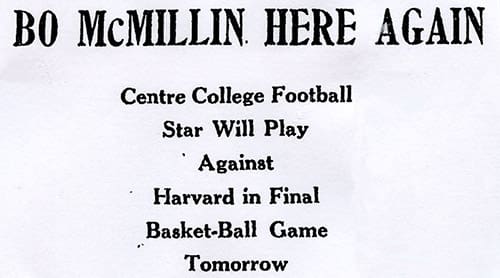
Boston newspaper story announcing upcoming Centre basketball team's arrival
It was like a reunion when the Colonels returned to the Boston area. The local papers played up the game because of the tremendously positive reception that Centre had received in the fall.
Harvard had just resurrected its basketball program. The college played an intercollegiate schedule from 1900 through 1908. From 1909 to 1920, the program was shut down and only unofficial teams were put on the court, almost a pick-up game situation, where students who were interested in playing would challenge other organizations to play.
In 1920, the athletic department decided to once again sponsor an official Crimson team, a coach, Edward A. Wachter, was hired, and Harvard once again took to the court.
The game with Harvard was played on the night of March 7 in the Hemenway Gymnasium on the Harvard campus. The gym, designed by architect Robert Peabody, was built with funds supplied by August Hemenway, Jr., son of a successful Boston merchant, who made a fortune trading with countries on the west coast of South America, particularly Chile. When it was completed in 1878, it was the largest such facility in North America.
Peabody designed Hemenway Gymnasium with a large assortment of gables, wings, dormers, chimneys and cupolas, along with an entrance which resembled a porte cochere. The building really wasn't set up for basketball as it had mainly been used to develop one of the premier physical education programs which had become nationally recognized and duplicated.

Hemenway Gymnasium, site of the game with the Harvard Crimson
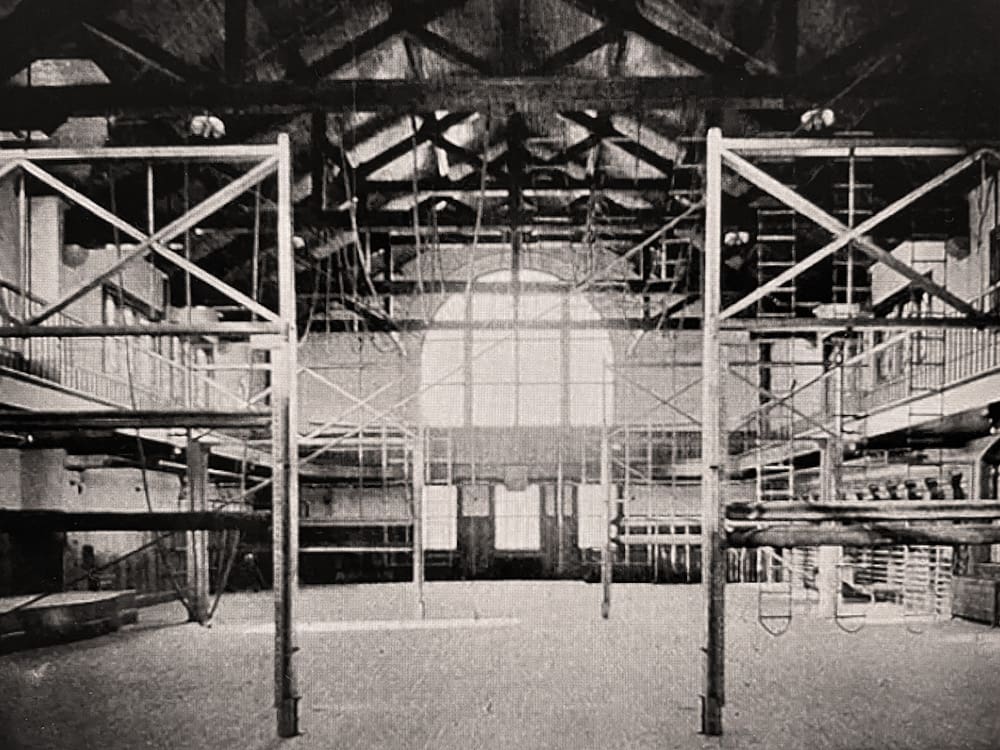
Interior of Hemenway Gymnasium as it was set up for physical exercise
Like everywhere Centre played football, new bleachers were rapidly installed so that the capacity exceeded 1,000.
When the Colonels ran onto the court for pre-game warm-ups, they were met with a loud cheer from the overflowing crowd which was swelled by a story in the "Harvard Crimson" publicizing "the return of the Gold and White lads who had played so brilliantly the previous fall in the Stadium."
The entire Crimson football squad turned out to meet their rivals on the gridiron who,"... had left behind a reputation for clean play and sportsmanship that has earned them a lasting welcome at Harvard."
The game lived up to the excitement it had generated.
Centre played but 5 men, 4 of whom had been on the football team that traveled to Boston. Army and Bo lined up at the guard positions, George Maver played center, and Blink Bedford and "Judy" Walden, the non-footballer, were the forwards.
The Colonels got off to a fast start and led by 6 at the half. During the second half, Harvard regrouped and forged into the lead for a short time, but Centre fought back and regained a 5-point lead with a little over 5 minutes left and managed to hold onto that margin until the final whistle, walking off the court victorious, 41-36.
As the 1921 "Old Centre" yearbook later stated, "Hemenway Gymnasium was kept in an uproar throughout the hotly contested event."

March 8, 1921 cartoon by Gene Mack, Boston "Globe." George Maver's name is misspelled as "Haver."
After the game, the players retired to Harvard Square for refreshments and to rehash not only the basketball game, but many of the Crimson football players sought out the Colonels to wish them well again and to let them know how much they looked forward to their return the following October.
The Centre team was driven to South Station by members of the football team for an overnight Pullman journey to Providence, Rhode Island, where a game was scheduled the next night against Brown University.
Centre again played before a sold-out crowd against the Brown Bears. The Colonels had an easier time than against the Crimson, winning 40-28. Coach McDowell managed to get Chas McCall, Royce Flippin and Stanley Robb into the game, in addition to the starters. George Maver, with 24 points, almost outscored the entire Brown team.

Lyman Gymnasium, Brown University, built in 1891

Lyman Gymnasium where the Colonels played in the spring of 1921. When used for basketball, the fans watched along the wall and on the track which circled above the gym as they did at Centre's gym.
The win put the Colonels' record at 10-2.
After another Pullman sleeper overnight, Centre was in Baltimore on March 10 to take on Johns Hopkins.
The game was a nip and tuck, lead-changing affair until the last seconds. Centre was ahead as time expired and won, 26-24.
The Hopkins game ended a very successful season with the Colonels finishing 11-2.
With the 3 wins on the trip to the East, big wins over Vanderbilt and Auburn, and a split with S.I.A.A. champion Kentucky, Centre's remarkable group of young men, though small in number, had proven that in basketball, as in football, the little school could play and beat the larger schools.
